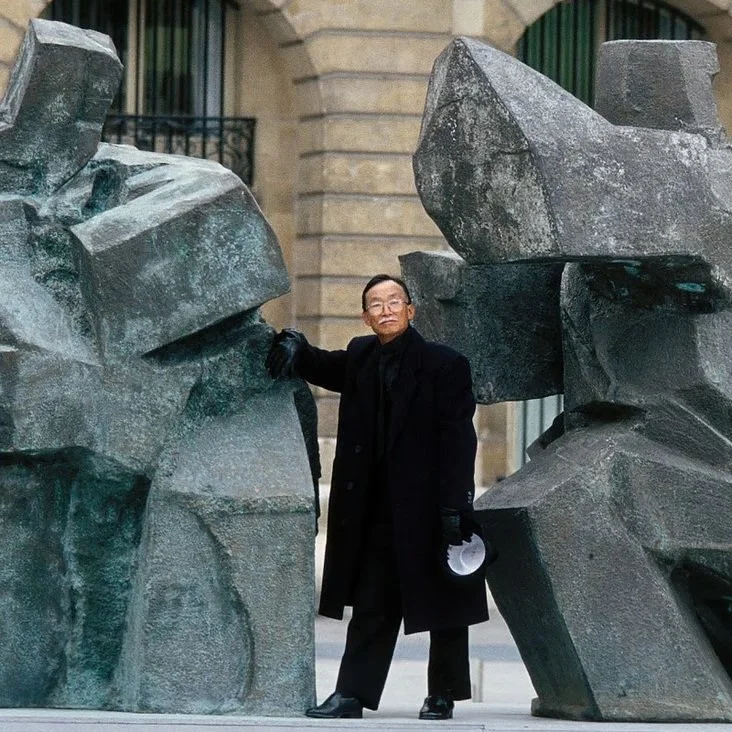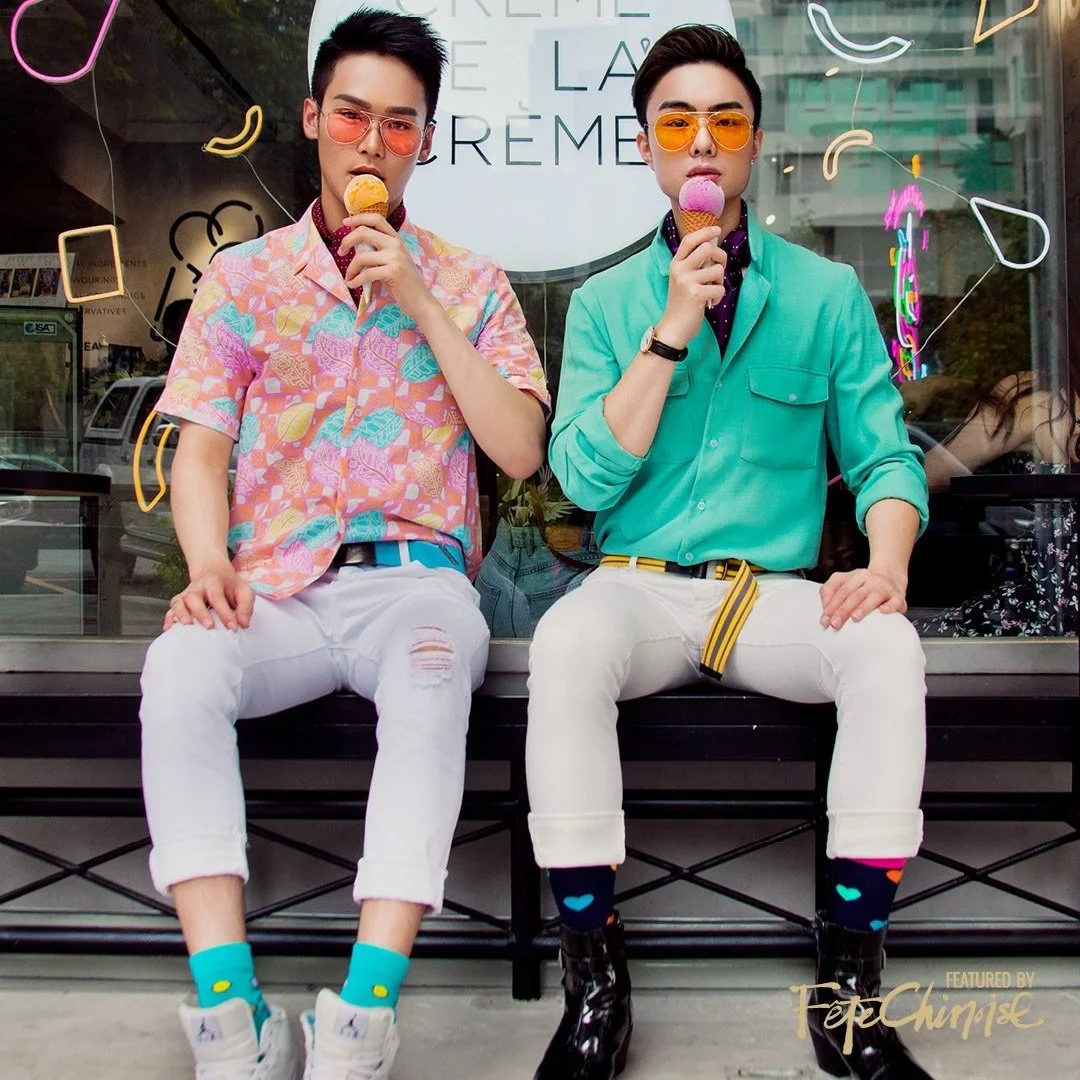Fête Featured Artist: Shallen Chen on Hybrid Cultural Identity
Written and Translated by Shallen Chen
Shallen Chen in her hometown, Chongqing.
Chongqing. Courtesy of the Author.
For most sixteen year olds, to start alone in a totally different culture is not an easy task; but for me, running away from the university entrance exam (gaokao) and living at a place with freedom was a dream come true! However, the excitement only lasted for a year – at the end of my first summer vacation when I said goodbye to my parents again at the Beijing International Airport, I felt an intense painful emotion. It felt like being pushed and pulled in different directions created by the distance, past and future.
After 12 years of living in Ontario, I still think of the mountains and rivers in my hometown of Chongqing when I drive in the much flatter city of Toronto. When I visit Chongqing after having spicy hot pot, I think of the dim sum restaurant in the plaza near my home in Markham. I used to say that I would never be a real Canadian, but I was also no longer fully Chinese because the space I was living in was an in-between space. Different from before, this cultural ambivalence is no longer relevant in my life today. I began to accept and even appreciate living as if on a teeter-totter. Even thought this teeter-totter may never rest, standing on it makes people become unique and special. To see the teeter-totter was the starting point that led my art to focus on seeing the differences between the Western and Chinese cultures, and at the same time discovering the underlying beauty and harmony underlying. This is hybridity. As theorist Homi Bhabha states, hybridity “holds the tension of the opposition and explores the spaces in-between fixed identities through continuous reiterations” (605).
2008年七月末,我第一次獨自降落在多倫多皮爾遜國際機場時剛滿十六歲。我記得航空公司當時規定,未年滿十八歲的旅客第一次登陸時,可攜帶三件二十三公斤的托運行李和一件十公斤的隨身行李。這個配額被替我收拾行李的爸媽用的淋漓盡致。我知道我的父母一定很擔心我,會徹夜等我平安到達的消息。尤其是這十二個小時的時差,讓一萬兩千公里的距離看起來更遠了。這些年來,視頻通話,國際電話卡,英漢詞典,加拿大移民局官網,都成了我生活中最熟悉的朋友。 對十六歲的女孩來說,在一個陌生的國家和文化中獨自生活並不是一件容易的事情,但是對那時候的我來說,能不用參加高考,來到一個“沒有人管”的地方簡直太棒了!這種興奮的心情整整持續了一年,一直到第二年夏天,我再次在首都機場和父母道別。我第一次體會到,過去與未來以及距離所為我帶來的拉扯感。
現在離那時十二年過去了,當我開車在多倫少有起伏的公路上穿行時,我時常會想起我的家鄉山城重慶。回國短住時,我卻也會在吃完火鍋的第二天想念家門口plaza賣的正宗早茶。現在我定居在多倫多,卻也依然覺得我永遠不可能成為一個真正的加拿大人,卻再也不是一個真正的中國人。不同於以前的是,這種民族矛盾感曾經給我帶來的不安,隨著時間的推移,慢慢讓我開始接受這種在“蹺蹺板”上的生活。雖然這個蹺蹺板很難被平息,被固定,但在不斷嘗試平衡時腳下的搖擺與心靈的冒險,讓每一個留學生與移民都變成特別的個體。我的藝術尋找兩種文化間的差異與不同,但我致力於表達差異所帶來的幸福與美感。這就是所謂的文化混雜。學者Homi Bhabha曾說,“文化混雜並不是指兩種文化的交合,而是兩種文化同時存在的狀態。文化混雜通過不斷重複去探索文化身份間之間的空間。”
現在離那時十二年過去了,當我開車在多倫少有起伏的公路上穿行時,我時常會想起我的家鄉山城重慶。回國短住時,我卻也會在吃完火鍋的第二天想念家門口plaza賣的正宗早茶。現在我定居在多倫多,卻也依然覺得我永遠不可能成為一個真正的加拿大人,卻再也不是一個真正的中國人。不同於以前的是,這種民族矛盾感曾經給我帶來的不安,隨著時間的推移,慢慢讓我開始接受這種在“蹺蹺板”上的生活。雖然這個蹺蹺板很難被平息,被固定,但在不斷嘗試平衡時腳下的搖擺與心靈的冒險,讓每一個留學生與移民都變成特別的個體。我的藝術尋找兩種文化間的差異與不同,但我致力於表達差異所帶來的幸福與美感。這就是所謂的文化混雜。學者Homi Bhabha曾說,“文化混雜並不是指兩種文化的交合,而是兩種文化同時存在的狀態。文化混雜通過不斷重複去探索文化身份間之間的空間。”
Hybridity in Transculturation
Hybridity is one of the most important elements of transculturation. Hybridity is presented as the “cultural logic” of globalization as noted by Marwan Kraidy, where he states, “it entails that traces of other cultures exist in every culture” (148). In today’s society, transculturation does not necessarily suggest a physical movement of traveling between locations to spread the culture, but that media and technology offer an ideal platform for various cultural forms to be shared. When shared, characteristics of individuals from different cultures, as well as their personal histories are circulated.
I was inspired to create my video installation, Karuna, as a self-portrait of living in a hybridized society, where new comers, such as others and myself can be seen as a hybridity of cultural influences.
Sponsored by Palettera.
The artwork includes three video projections and two audio sets that made up the hybridized space I experienced in Canada. In order to visualize the concept of cultural ambivalence towards my idea of what a hybrid identity may look like, I mirrored and double-layered photos I took, and created three short video loops. These “mixtures” of American cultural forms and East Asian cultural forms can be seen as a precise example of hybridity. This artwork was first exhibited in 2017 at my solo exhibition Teetering Tweener.
In fact, this work is set as a screen-saver on my laptop. I feel calm and peaceful when I look at the different parts light up on the screen – I feel a new sense of belonging to this in-between space. Time is a gift that constantly gives us new understanding of things. I now see the dawn and sunset between night and day, as well as the waves and the sand connecting the ocean and lands. Those in-between spaces are fascinating and give meaning to art. Living in a country full of immigrants, I believe many are living in an in-between space, and each one of us live and understand our lives differently. My artwork speaks to people who share similar experiences as me. My hope is to creatively visualize the harmony that lies under nostalgia.
During the quarantine, I have been thinking about the topic of cultural identity more and more as there will be a new addition to my family soon. What will cultural identity mean to this new life? How will it change my perspective? It’s at times like these that I feel like a 16 year-old again, looking forward to the road ahead with expectation, waiting for inspiration to touch my life so that I can share it with the world.
Shallen Chen’s Solo Exhibition Teetering Tweener.
“Living in a country full of immigrants, I believe many are living in an in-between space, and each one of us live and understand our lives differently. My artwork speaks to people who share similar experiences as me. My hope is to creatively visualize the harmony that lies under nostalgia. ”
文化混雜是出現在文化轉換過程中的重要元素。 Marwan Krady曾把文化混雜形容為全球化中的文化邏輯,“每一中文化中都存在其他文化的踪跡”。在今天,文化轉換不再由地理位置的變化來傳播,而是由各種新媒體和現代科技作為載體而被大量傳播。當各種文化符號在被大量傳播時,它們也間接傳播著不同文化的含義,背景和形形色色的故事。 我在創作Karuna的時候將這個作品當成了我的自畫像,因為我的成長經歷和眾多其他的移民和留學生就是文化混雜的典型例子。 Karuna的影片中向觀看者展示了三幅混合多個東西方典型文化元素的照片。其中,每張照片被左右對調並重疊,象徵著我的雙重文化身份;照片中的文化符號被不斷點亮並強調,象徵著這兩種文化的碰撞。這些大量文化符號混合的場景在我們的身邊隨處可見,這些場景中蘊含著大量的民族文化矛盾。當這個作品在2017年,初次被展出在我的個人展《站在蹺蹺板上的人》中。
而今,這幅作品被我設置為手提電腦的屏保,但看著這些文化符號在屏幕上閃耀時,我感受到的是一種獨特的歸屬感。這種歸屬感是通過時間沉澱下來的,我對生活的新的理解。過渡夜晚和白天的,還有朝霞和黃昏;連接海洋和大陸的,還有浪花和沙灘。站在東方和西方中間的人,成了這副作品新的定義。而對於觀看者而言,到底這個站在東方和西方中間的人感受到了什麼,體會到了什麼,回憶起了什麼—我想在每一個人生階段,我們都會有新的理解。我的藝術創作意在和觀者交流類似的經歷與心路歷程,我希望能為觀者們呈現這種因為鄉愁而帶給我的心靈的平靜。
疫情期間我對文化身份的思考變得越來越多,因為我的家庭即將迎來一個新的生命。文化身份對於這個新的生命來說又意味著什麼?對我來說又將意味著什麼?我像少年時一樣,帶著對未來的憧憬和期待,翹首以盼下一段人生會給我帶來怎樣的思考與藝術靈感。
Shallen Chen’s Karuna.
Citations:
Bhabha, Homi. The Location of Culture.New York City: Routledge, 1009. Print.
Kraidy, Marwan M. Hybridity, or the cultural logic of globalization. Philadelphia: Temple U Press, 2005. Print.
About the writer, Shallen Chen
Sponsored by Ferris Wheel Press.





















